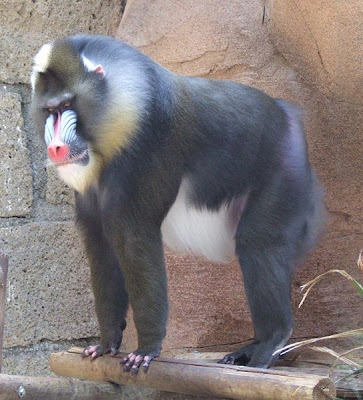
This is Polar Bear (Ursus maritimus), a species of bear native to the Arctic Ocean and its surrounding seas. Although it is closely related to the brown bear, it has evolved to occupy a narrow ecological niche, with many body characteristics adapted for cold temperatures, for moving across snow, ice, and open water, and for hunting the seals which make up most of its diet.
Although most polar bears are born on land, the polar bear spends much of the year on the frozen sea. That's why it is often regarded as a marine mammal. The polar bear tends to frequent areas of open water, such as polynyas and leads to hunt the seals that make up most of its diet.

The polar bear is the largest predator that spends time on land. Adult males weigh 352–680 kg (775–1500+ lb) and measure 2.4–3.0 m (8–10 ft) in length. Adult females are roughly half the size of males and normally weigh 150–249 kg (330–550 lb), measuring 1.8–2.4 m (6–8 ft) in length. When pregnant, however, they can weigh as much as 499 kg (1,100 lb).
The polar bear is classified as a vulnerable species. Of the 19 recognized polar bear subpopulations, 5 are declining, 5 are stable, 2 are increasing, and 7 have insufficient data. For thousands of years, the polar bear has been a key figure in the material, spiritual, and cultural life of Arctic indigenous peoples, and the hunting of polar bears remains important in their cultures. That's why many people believes that unrestricted hunting is a serious threat for this species and protests against such killings.

But, the International Union for the Conservation of Nature and Natural Resources (IUCN) now lists global warming as the most significant threat to the polar bear, primarily because the melting of its sea ice habitat reduces its ability to find sufficient food. The IUCN states, "If climatic trends continue polar bears may become extirpated from most of their range within 100 years."Recently, the U.S. Department of Interior listed the Polar Bear as a threatened species under the Endangered Species Act. We all must work together to save this beautiful animal from extinction.








